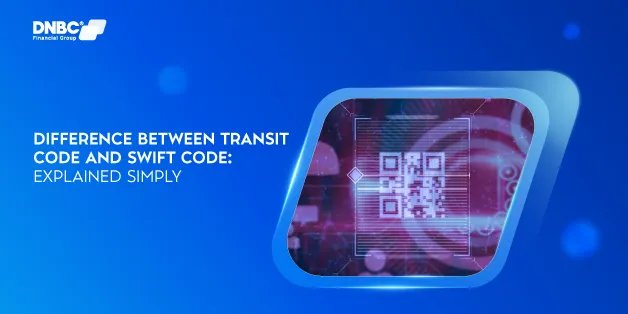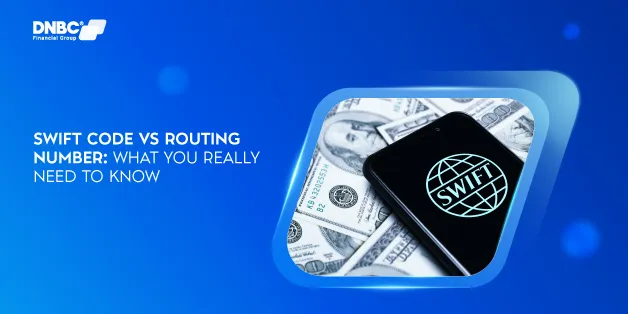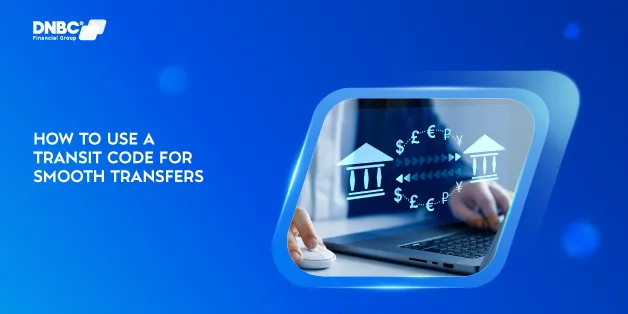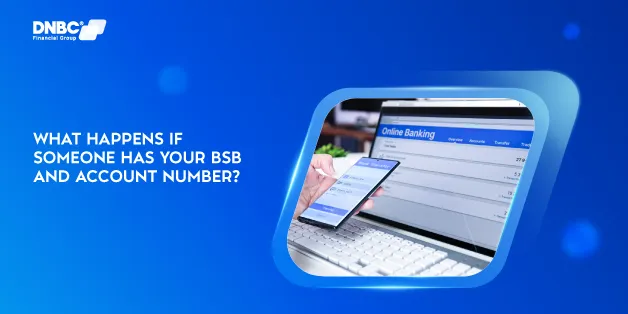- Home
- Blog
- Personal Finance
- Canada Transit Number 9 Digits Explained Simply
Canada Transit Number 9 Digits Explained Simply
Personal Finance
15 May 2023
DNBC Team
This article is a part of DNBCGroup Blog Center
Contact DNBCGroup for the technology news, tips, trends, and updates.
If you've attempted to transfer funds to Canada, you may have encountered the term "transit code" in conjunction with the 3-digit financial institution number and the 7-12 digit account number. These codes are primarily utilized in the United States and Canada. However, it is important to understand what exactly a transit code is.

What is a transit code? And how to find it?
What is a transit code?
A Transit Code typically refers to a 9-digit number that represents a specific financial institution and is used for transferring money between different banks. However, in Canada, a Transit Code is actually a 5-digit Branch Transit Number, unique to each bank, including investment banks, retail banks, and credit unions.
This number is used to identify the specific financial institution and is crucial for sending or receiving any kind of money transfer. It is important to note that the numbers issued are only owned by the bank, so if you and your friend both open a checking account, you are likely to share the same routing number on your checks. The only difference between the two of you will be your account number.
In what form will it be presented?
The format for the banking information will typically follow this pattern: Transit number, Financial institution number, and Account number.
The Transit number is a 5-digit number that identifies the specific branch where you opened your account. It's important to note that this number is distinct from the IBAN number or account number.
The Financial institution number is a 3-digit number that represents the bank you use.
Lastly, the Account number is a 7-12 digit number that specifies your individual account. In case the required account number is 7 digits and you only have 6, simply add an extra "0" at the beginning to make it the correct length.
What is a Transit Code used for and why is it important?
Without a Transit Code, many banking services such as direct transfers, wire transfers, and ACH transactions would not be possible. Therefore, having a Transit Code is necessary for conducting any kind of money transfer.
In Canada, many Transit Codes are now integrated into IBAN, SWIFT, or international bank identifiers, which means that separate Transit Numbers may not be required by some banks. However, for international payments made through direct bank transfers, it's likely that you'll need to know and provide the Transit Number to the bank. So, if you're conducting international payments for your business or other purposes, knowing and having the Transit Code is crucial.
Transit Codes serve as a distinctive identifier for the bank where you're sending the money. With over 28,000 financial institutions, some of which have similar names, it's easy to get confused and mistakenly send the payment to the wrong branch. This is a situation you would want to avoid at all costs. Therefore, each bank is assigned a unique set of numbers to guarantee the precision of the payment and transfer process.
What distinguishes Routing Number from Transit Number and Where can you find your Transit Number?
To put it simply, Routing numbers and Transit numbers are essentially the same and can be referred to by different names. Common terms for Transit Codes include RTN number, ABA number, ABA routing number, Bank routing number, Cheque routing number, Fedwire number, and Local routing number.
You can typically find your Transit Number on your online banking portal or bank statement. If you have a Canadian bank account, you can find your transit code on check in the bottom left corner of your check. It should be a 9-digit number that identifies the branch where you opened your account. This number is also sometimes referred to as the branch transit number or routing number. If you still can't locate it, you can check your bank's website, contact their customer representative, or visit the bank in person.
Note that some banks may have different Transit Numbers based on the state you opened the account in or the type of transfer you're making, such as paper transfers or electronic funds transfers. Therefore, it's important to be mindful of your local bank's regulations.
There’s an ideal choice to send money overseas
Although sending payments within your country with your bank may be simple enough, international transfers are typically more complicated and come with high fees. However, there are specialist services that can provide a cheaper and more efficient way of sending money globally, avoiding the typical costs associated with international transfers.
Consider using DNBC Financial Group, a secure and speedy digital money transfer service that provides low fees and competitive exchange rates. It is available worldwide and operates differently from traditional banks, eliminating the need for costly international transfers.
About DNBC Financial Group
DNBC Financial Group is committed to making international financial transactions easier. Our primary goal is to reduce the expenses associated with international shipping and spending, facilitate payment collection from clients abroad, transfer funds between global subsidiaries, and mitigate the risks linked to currency fluctuations. This dedication has allowed us to expand our services swiftly and support individuals and businesses globally.
Frequently Asked Questions (FAQs) – Transit Code Edition
1. Can I use the same transit number if I move to another city?
Nope! Transit numbers are tied to specific bank branches—like your favorite coffee shop that only exists on one corner. If you move and open an account at a new branch, your new account will have a different transit number.
2. Is the transit number secretly a time machine code for money?
We wish! While it doesn’t bend space-time, the transit number does ensure your money travels to the right place. It's the digital passport for your payment.
3. What happens if I mix up the transit and institution number?
That could delay or even bounce your payment. It’s like sending a love letter to the wrong address—awkward and disappointing. Always double-check before hitting send!
4. Do I need a transit code if I’m using a fintech app?
Depends! Many apps still rely on traditional banking systems behind the scenes. If they ask for it, you’ll need it. Otherwise, sit back and enjoy the simplified experience.
5. Why do Canadian checks look like secret treasure maps at the bottom?
Those strange numbers and symbols are routing details: transit number, institution code, and account number. It’s not a riddle—it’s how banks know where to send (or receive) your money.
6. Can I memorize my transit number to impress people at parties?
You *can*, but we recommend starting with your phone number first. Transit codes are great for banking—not as much for flirting.
7. What if I used the wrong transit code but the right account number?
Uh-oh. That’s like having the right house number but on the wrong street—your money may go somewhere you didn’t intend. Call your bank immediately.
8. Are transit codes used for crypto transfers?
Nope! Crypto has its own rules and doesn’t use traditional banking infrastructure like transit codes. It's a whole different universe of alphanumeric addresses.
Your Trusted Partner
In your Digital
Journey
Free 1 - on -1 support
Free account opening fees
No hidden fees
Note: The content in this article is for general informative purposes only. You should conduct your own research or ask for specialist advice before making any financial decisions. All information in this article is current as of the date of publication, and DNBC Financial Group reserves the right to modify, add, or remove any information. We don’t provide any express or implied representations, warranties, or guarantees regarding the accuracy, completeness, or currency of the content within this publication.
Related posts

Difference Between Transit Code and SWIFT Code: Explained Simply
01 October 2025

Swift Code vs Routing Number: What You Really Need to Know
01 October 2025

How to Use a Transit Code for Smooth Transfers
01 October 2025

What Happens If Someone Has Your BSB and Account Number?
01 October 2025

Sending Money from Australia to New Zealand: A Complete Guide
01 October 2025